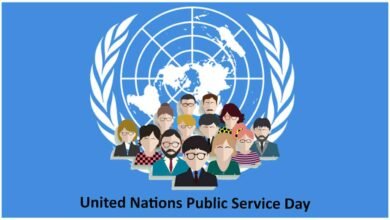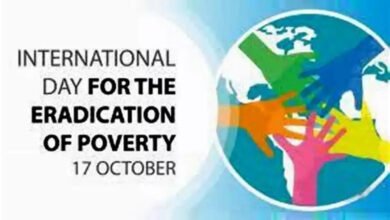World Hepatitis Day: A Global Call to End Hepatitis Through Awareness and Action

Every year on July 28, the world celebrates World Hepatitis Day, a day dedicated to raising awareness about hepatitis and its impact on global health. Despite being preventable and treatable, hepatitis continues to be the cause of 1.3 million deaths, including children, every year.
Many of these young lives could be saved through early detection, vaccination, and access to proper medical care. This global observance serves to increase understanding of the disease and also to strengthen efforts to protect children and ensure a future free from hepatitis death.
Theme for World Hepatitis Day 2025
To eradicate hepatitis and prevent liver cancer, the 2025 theme, “Hepatitis: Let’s Break It Down,” calls for immediate efforts to eliminate systemic, social, and financial barriers, including stigma.
Although chronic hepatitis B and C can be prevented, treated, and—particularly in the case of hepatitis C—cured, they often silently cause liver damage and cancer. The theme emphasizes the need to streamline, expand, and integrate hepatitis services—such as safe injection practices, harm reduction strategies, and especially testing and treatment—into national health systems.
To increase access, integrate care, and eliminate hepatitis as a public health threat by 2030, the campaign serves as a reminder that urgent action is needed.
History of World Hepatitis Day
World Hepatitis Day (WHD) was established to promote efforts to prevent, diagnose, and treat hepatitis, and to increase global awareness of the disease. It is observed each year in honor of Dr. Baruch Blumberg, the scientist who discovered the hepatitis B virus and developed the first hepatitis B vaccine.
In 2008, the World Health Organization (WHO) and the World Hepatitis Alliance organized the first World Hepatitis Day. Since then, it has grown into a global movement, with communities, governments, and health organizations joining forces to support hepatitis education and action.
Over the years, WHD has played a key role in raising awareness of the hepatitis epidemic, driving policy improvements, and increasing access to vaccines and treatment. It remains a vital platform in the fight against hepatitis and its consequences, such as liver cancer.
Data and Statistics
- According to the World Health Organization (WHO), hepatitis B and C are responsible for approximately 3,500 deaths and 6,000 new infections every day, falling below the global target to eliminate viral hepatitis as a public health threat by 2030. In 2022 alone, hepatitis claimed the lives of 1.3 million people.
- Despite its widespread presence, major gaps remain in diagnosis and treatment. Of the 254 million people living with chronic hepatitis B, only 13.4% have been diagnosed, and 2.6% are receiving treatment. In comparison, among the 50 million people infected with hepatitis C, 36% have been diagnosed, and 20% have received treatment.
- A 2015 study found that approximately 45% of all chronic liver disease cases and nearly 55% of liver cancer cases were caused by deaths related to hepatitis B virus (HBV) and hepatitis C virus (HCV).
- Globally, only 45% of newborns received the hepatitis B birth dose vaccine within the first 24 hours of life. The situation is even more concerning in the WHO African Region (AFRO), where only 18% of newborns received the birth dose, despite the region accounting for 63% of new hepatitis B infections.
- Chronic hepatitis B and C infections disproportionately affect individuals aged 30 to 54, who represent half of all cases. In the case of hepatitis B specifically, 58% of cases occur in men, and 12% in children.
Importance of World Hepatitis Day
World Hepatitis Day (WHD) shines a light on viral hepatitis, a disease that affects both children and adults but often goes unnoticed. The day is important because it spreads awareness, challenges stigma, and promotes public engagement.
1. Raising Awareness and Encouraging Action
Hepatitis causes silent liver damage over time, as many people with the infection are unaware they have it. Commemorating World Hepatitis Day helps communities and health organizations spread knowledge about the disease’s symptoms, causes, and the importance of early detection and treatment.
2. Advancing Healthcare and Policy Reforms
World Hepatitis Day offers a platform to advocate for stronger healthcare policies, increased screening programs, accessible vaccines, and affordable treatments. It urges governments and international bodies to make hepatitis elimination a top public health priority.
3. Reducing Stigma
Due to stigma and misinformation, many people hesitate to get tested or seek treatment. World Hepatitis Day helps correct misconceptions and promotes empathy, inclusion, and support for affected individuals, including children and young people.
By promoting prevention, early diagnosis, and access to life-saving care, WHD brings the global community together in the fight against hepatitis.
Who Is at Risk for Hepatitis
While anyone can contract hepatitis, certain groups—including children—are at higher risk due to lifestyle, environment, or medical history. These include:
a. Individuals Who Inject Drugs
Hepatitis B and C are easily spread through contaminated blood when sharing needles or drug equipment. Young people who abuse drugs are at increased risk.
b. Healthcare Workers
Frequent contact with blood and bodily fluids increases the risk of accidental exposure if safety measures are not followed.
c. Individuals with Multiple Sexual Partners
Unprotected sex increases the risk of hepatitis B and C transmission.
d. Infants Born to Infected Mothers
Without proper prevention, hepatitis B can be transmitted from mother to child during childbirth.
e. Blood Transfusion or Organ Transplant Recipients
Especially in regions where blood screening is inadequate.
f. People Living in or Visiting Areas with Poor Sanitation
Contaminated food or water can cause hepatitis A and E infections.
g. Individuals Receiving Unregulated Tattoos or Piercings
This is common among children and youth. Using non-sterile equipment can expose them to hepatitis viruses.
Tips for Preventing Hepatitis
Preventing hepatitis is vital to reducing liver disease. Some forms of hepatitis can be prevented with vaccines, while others require public health measures and behavior changes.
i. Vaccinations
Hepatitis A and B can be effectively prevented through immunization. The hepatitis B vaccine also offers indirect protection against hepatitis D. Children should be vaccinated early, and pregnant women should receive treatment to avoid mother-to-child transmission. These vaccines are safe, widely available, and recommended for all newborns.
ii. Safe Food and Water Practices
Hepatitis A and E are commonly spread through contaminated food or water. Parents should ensure that children wash their hands frequently, eat well-cooked meals, and drink clean water to prevent infection.
iii. Safe Sex Practices
Hepatitis B and C can be transmitted through unprotected sex. Using condoms and being aware of your partner’s health status can significantly reduce the risk. Individuals with STIs or multiple partners should be tested regularly.
iv. Avoid Sharing Personal Items
Children should be taught not to share items like razors, toothbrushes, or nail clippers, which can transmit the virus if contaminated.
v. Safe Medical and Cosmetic Procedures
Parents and caregivers should ensure that any medical treatment, tattooing, piercing, or dental procedure is done by licensed professionals using sterilized equipment.
Efforts by World Bodies to Combat the Spread of Hepatitis
The World Health Organization (WHO) and UNICEF have been at the forefront of the global fight against hepatitis. Their coordinated efforts have contributed significantly to prevention, treatment, and awareness, especially in low- and middle-income countries. These efforts have led to measurable progress in controlling the disease and moving toward the goal of elimination.
World Health Organization (WHO) Initiatives
- Develops and disseminates guidelines on the prevention, diagnosis, and treatment of hepatitis.
- Supports countries in the development and implementation of national hepatitis action plans.
- Promotes hepatitis B vaccination, including the critical birth dose within 24 hours of birth.
- Collects and monitors global data on hepatitis to support surveillance and policy-making.
- Supports and promotes research into hepatitis vaccines and treatments.
UNICEF’s Role in Combating Hepatitis
- Delivers hepatitis B vaccines through routine childhood immunization programs.
- Promotes the birth dose of hepatitis B vaccine to prevent mother-to-child transmission.
- Integrates hepatitis prevention into maternal, newborn, and child health services.
- Collaborates with governments to ensure children receive hepatitis prevention and treatment at primary health care centers.
- Leads awareness campaigns targeting parents and caregivers to promote prevention, early detection, and reduce stigma.
Conclusion
As we observe World Hepatitis Day, it is a reminder that hepatitis remains a serious but preventable and treatable disease. Hepatitis can be eliminated by strengthening public health systems, expanding access to vaccination, early detection and treatment, and increasing public awareness to reduce stigma.
Governments, health organizations, and communities must work together to invest in research, promote education, and integrate hepatitis care into primary health services. By taking coordinated and sustained action, we can protect our children and move closer to a world free of hepatitis.





